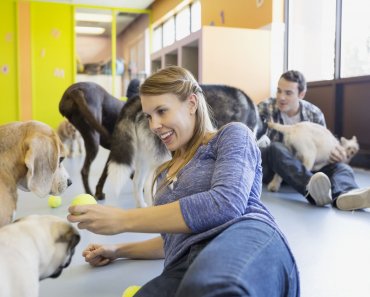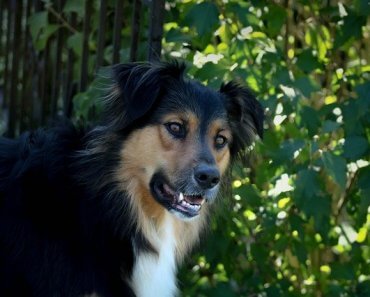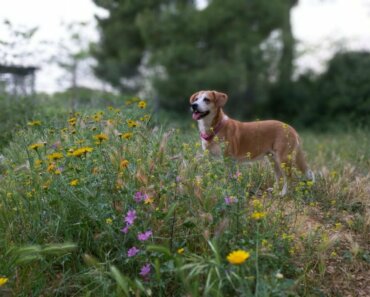Lure-reward training is by far the quickest and easiest technique for teaching dogs the meaning of our verbal instructions and for regularly testing comprehension as proof of training.
Dog training is almost entirely about communication, specifically teaching dogs our language, that is, ESL*…. Initially, food lures are used to teach the meaning of handsignals, and then food lures are phased out and handsignals are used to teach the meaning of verbal instructions. Dogs learn handsignals quickly because they are a language dogs understand — body language. Once dogs understand what we say, dog training transcends to a different level. As our dog acquires an ever-expanding vocabulary, teaching basic manners becomes even quicker and easier.
The central tenet of any educational endeavor is to, first, clearly communicate what we would like someone to do. With our dogs, that means whatever is contextually appropriate from a human viewpoint, and then we reward them for doing it. Luring stacks the deck so the dog is more likely to get it “right” from the outset, and then the dog is frequently rewarded for getting it right, which is the prime directive of all reward-based training techniques.
As a dog’s vocabulary grows, this changes the playing field when it comes to misbehavior and lack of compliance. Now, we may simply instruct our dog exactly how we would like them to act. It is an amazing relief and a true delight to learn how to effectively prevent or terminate misbehavior and noncompliance using our voice. In fact, voicing only a single word can communicate three vital pieces of information to the dog: (1) Stop what you’re doing, (2) do this instead, and (3) the degree of danger for noncompliance.
For example, if your dog is about to pee in the house, say, with some urgency, “Outside” or “Toilet.” If your dog is barking, instruct, “Shush.” If your dog is practicing agility in the living room, say, “Bed.” And if your dog is chasing the cat or your children, or about to dash out the front door or jump up on someone, simply instruct, “Sit.” A simple Sit is often the solution to so many problems.
Rather than waiting for utterly predictable bad habits and behavior problems to rear their ugly heads, and then attempting to correct them after the fact, lure-reward training takes the opposite approach — preventing predictable problems by teaching desirable behavior from the outset and establishing and internalizing good habits. Then, as these good habits are frequently reinforced, they increase in frequency and naturally crowd out unwanted behaviors. Lure-reward training rests on several key elements: early socialization, clear communication, offleash training, and the use of life rewards, not simply food treats.
- Early socialization: Ideally, prior to eight weeks of age, puppies should grow up indoors, in an enriched environment, and meet lots and lots of people safely at home. The consequences of insufficient socialization with people during the first three months of life become apparent when dogs reach five to eight months of age. Fear, anxiety, and reactivity toward scary stimuli and situations, especially unfamiliar people and dogs, are all adolescent-onset behaviors that destroy manners and make life a misery for dogs and owners alike. However, it’s never too late to socialize an older dog, should they lack confidence and life skills. However old your dog is when they join your family, start socializing right away.
- Clear communication: We need to bring back our voice to training. From the outset, we must teach the meaning of our instructions and then test that dogs understand them. We need to teach dogs ESL (or whatever language you prefer). Clear verbal instruction is essential for cuing basic manners and for providing guidance when dogs err. Then let’s use our words to praise our dogs and celebrate with them when they do a good job.
- Off-leash training: First train your puppy or newly adopted adult dog off-leash at home, both indoors and outdoors, and only then attach the leash to your trained puppy for their first walk. Otherwise, your untrained dog will likely learn to pull onleash during their very first walk. For inveterate pullers, words of guidance help considerably; for example, to instruct a dog to speed up when lagging, say, “Hustle,” and to instruct a dog to slow down when forging or pulling, say, “Steady.”
- Life rewards: To begin, lure-reward training uses food lures to teach dogs what we would like them to do, and it uses food rewards to motivate them to want to comply. However, food lures are phased out entirely as soon as dogs learn hand signals, and food rewards are largely replaced by far more powerful life rewards. This is done by integrating numerous, very short training interludes into walks, sniffs, play with other dogs, and interactive games with us. Additionally, we creatively “power up” praise as perhaps the most powerful secondary reinforcement on the planet.
Other behaviors and activities that dogs really enjoy are also used as rewards — behaviors that most people consider “problems.” However, by putting “problem” behaviors on cue, we can teach dogs when it is OK to bark, hug, or let off steam (and when it is not). By using cued behaviors as rewards, the problematic notion of the undesired expression of a dog’s normal, natural, and necessary behaviors becomes history, since we know how to turn them on…and how to turn them off. All in all, life rewards are so much more powerful and effective than a mere food treat.
The key for a successful relationship is learning how to fine-tune and mold our dog’s temperament, reliably cue desirable behavior, modify behavior in terms of appropriateness (when, where, what, how much, and how long) and quality (reliability, promptness, duration, precision, pizzazz, and panache), and motivate dogs in such a way that they are only too happy to oblige.
Eventually, external rewards become unnecessary because the dog becomes internally reinforced and self-motivated, and simply doing what we’ve asked becomes more than sufficient reward. This is the tango of training — an exquisite, interactive, unique choreography of life that dogs enjoy with their people, and people enjoy with their dogs. In a sense, the same verve that dogs have for tracking, running, chasing, hunting, herding, and pulling fuels the dog’s joy for training, that is, interacting with and being part of a trusting, thoroughly enjoyable, totally encompassing relationship with us. This is when we realize that dogs are so much more than their genetic heritage. Each dog is an individual — a one-off — our dog. And this is when we fall in love.
Editor’s Note
*ESL refers to “English as a Second Language” — in this case, second to “dog”.
Excerpted from Dr. Ian Dunbar’s new book, Barking Up the Right Tree — The Science and Practice of Positive Dog Training (New World Library, December 2023). A veterinarian and animal behaviorist, Dr. Dunbar developed the SIRIUS® Puppy Training method in 1982, revolutionizing how puppies and dogs were trained. In Barking Up the Right Tree, he details this quick, easy, and highly effective lure-reward approach for teaching dogs ESL.



























